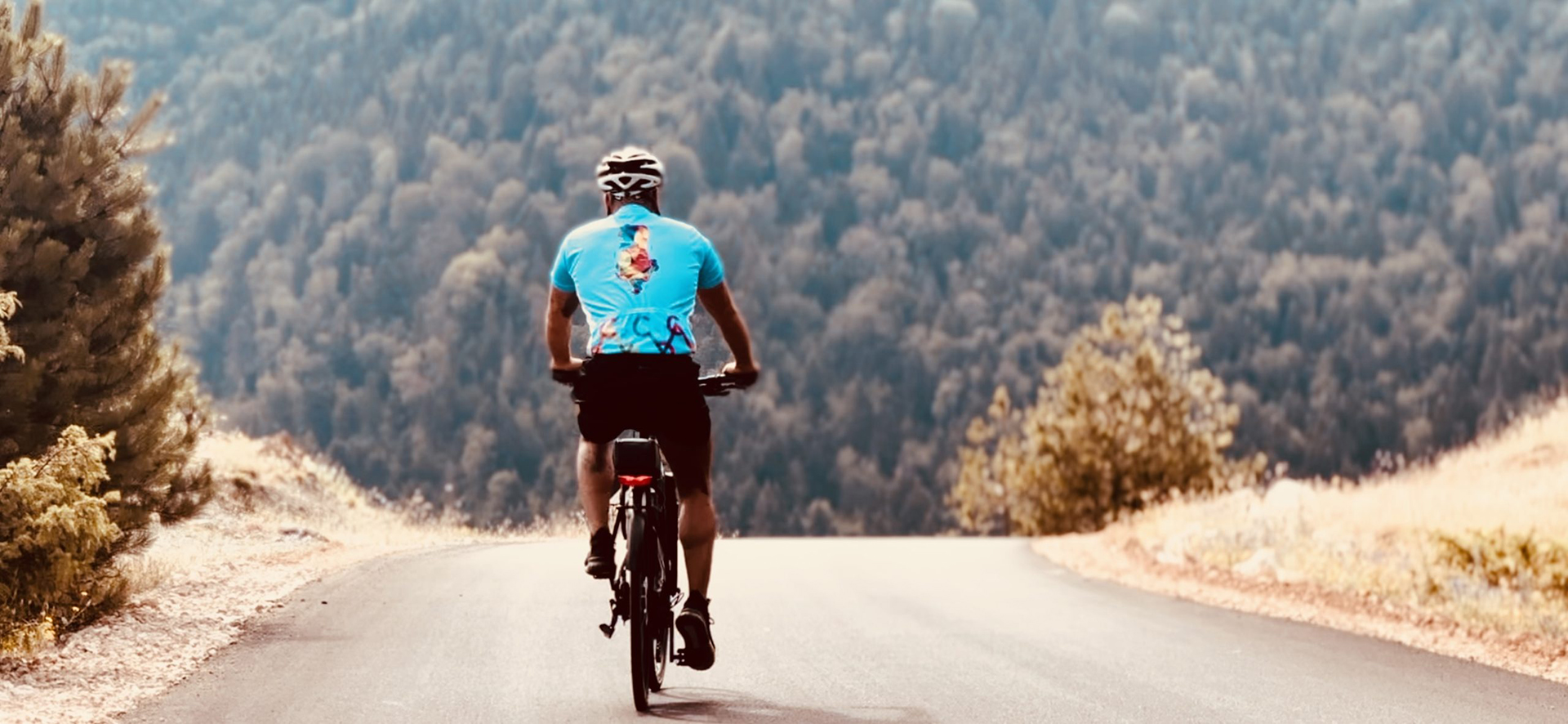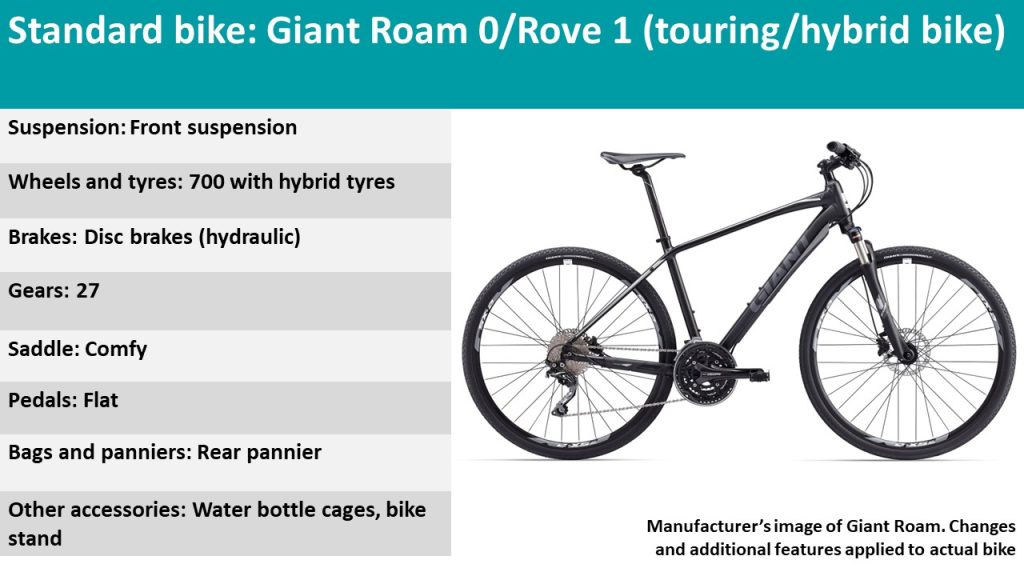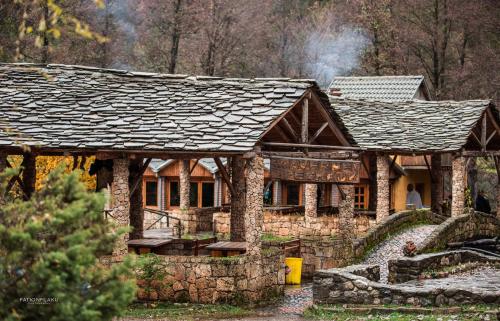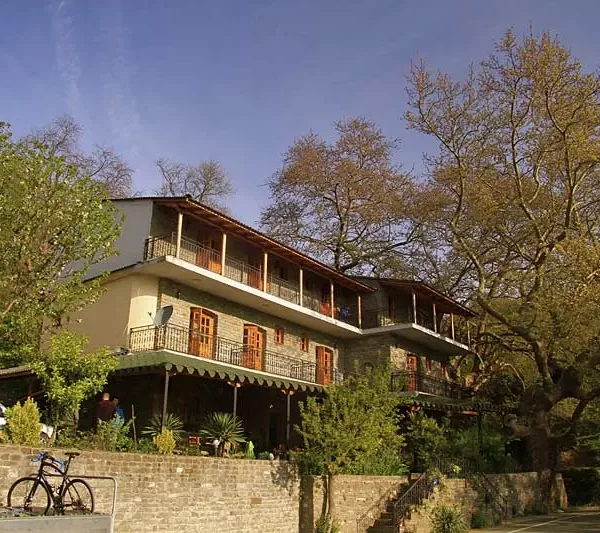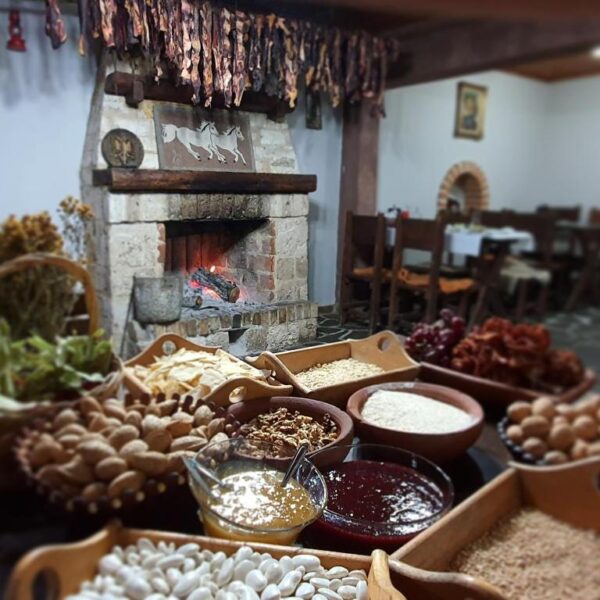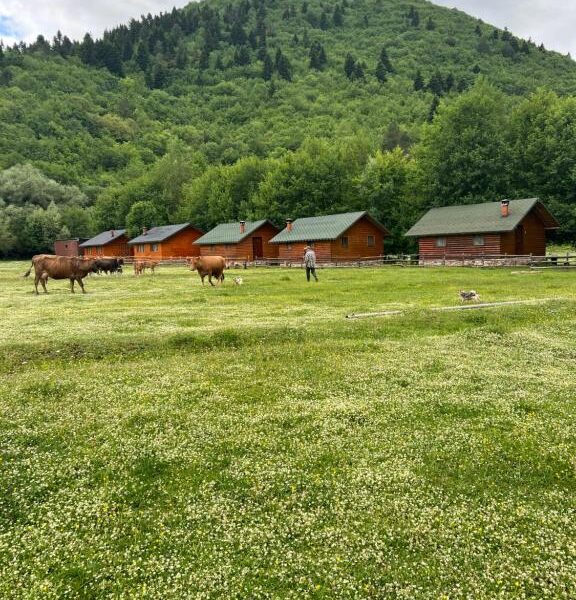UNESCO Tour
1390 €
Total distance : 485 km | Total Assent : 6023m | 100% Tarmac
Discover the beauty of this previously isolated country by bike
This part of the world is hotter than hot right now, and we aint gonna lie, this trip’s name says it all. Sunshine, sunsets, and sights are served up left right and centre, with a nature fix dotted in-between to keep every explorer tuned in. 10-days of life changing experiences are yours for the taking.
Some say that visiting Albania is as close as you’ll get to travelling back in time. It wasn’t until the collapse of the People’s Socialist Republic of Albania in 1991 that the world got its first glimpse of the country within. Huge snow-capped mountains, inviting beaches, rural villages, a genuine subsistence culture and an exceptionally friendly welcome is what you will find here. We cycle through the very best of Europe’s beautiful unknown, beginning our tour on the Macedonia border, biking towards the ancient town of Gjirokastra passing soaring peaks and lush green valleys. From here, we begin our descent to the Albanian Riviera, passing Unesco-listed Butrint and Llogara National Park, before relaxing by the sea at our hotel in Vlorë.
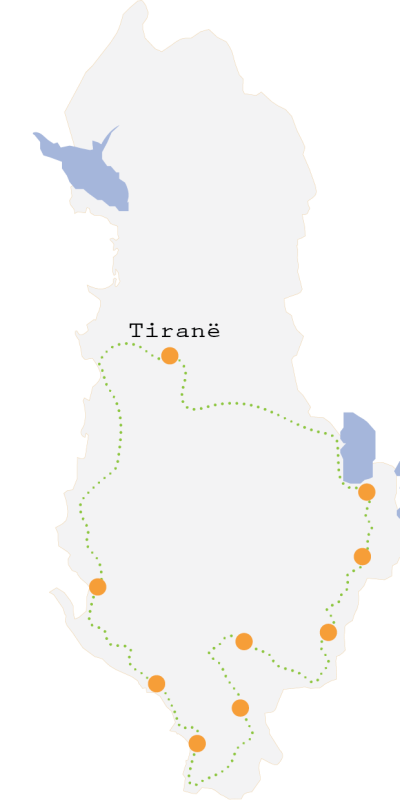
WHAT’S INCLUDED
WHAT’S NOT INCLUDED
Trip Notes
Click on the button below for detailed Trip Notes containing all the particulars about this trip, including kit lists and practical information.
Note: these can vary by departure; you can check out the specific Trip Notes for your chosen adventure on the dates & prices page.
Itinerary
Day 1 Arrival
Rendezvous at the hotel at 18:00 where you will meet the rest of the group and your tour leader for the tour briefing, followed by a relaxing welcome dinner. Panniers will be given to you at this point that you will use for the duration of the tour as well as a set of maps with details about each riding day. Lively, colourful Tirana is the beating heart of Albania, where this tiny nation’s hopes and dreams coalesce into a vibrant whirl of traffic, brash consumerism and unfettered fun. Having undergone a transformation of extraordinary proportions since awaking from its communist slumber in the early 1990s, Tirana’s centre is now unrecognisable, with buildings painted in primary colours, and public squares and pedestrianised streets that are a pleasure to wander. Trendy Blloku buzzes with the well-heeled and flush hanging out in bars and cafes, while the city’s grand boulevards are lined with fascinating relics of its Ottoman, Italian and communist past, from delicate minarets to loud socialist murals. Add to this some excellent museums and you have a compelling list of reasons to arrive a day earlier here.
Hotel Sky2 | D
Day 2 | Lin to Pogradec
We will start the morning with a two hour transfer to the northern side of Lake Ohrid. From where, after we have unloaded the bicycles and fitted them to everyones comfort we will start cycling along the scenic shore of lake Ohrid towards Pogradec. After reaching our hotel in the town of Tushemisht, just 4 km east of Pogreadec, lunch will be served at a waterfront restaurant at Drilon national park. After checking in the hotel we will continue cycling in the afternoon, crossing over into Macedonia, and visiting the monastery of St Naum.
Lake Ohrid,one of the oldest lakes in the world, came into existence during a remote geological ages as a result of tectonic shifts and with its unique flora and fauna the lake is one of the largest biological reserves in Europe and with 212 known endemic species and a surface area of 358 km2 it is probably the most diverse lake in the world. This lake has preserved primeval life – forms which no longer exist.
39 Km – 300m Gain | Hotel Millenium | B,L,D

Day 3 | Pogradec to Korcë
Leaving Lake Ohrid, we climb to a high plateau bounded by mountains. We continue following the gorge for a while until the hills open up, leading to a vast plain and a colourful patchwork of individual farms. Depending on our arrival at the city, we will have the time to visit the old market and its quaint cobblestown streets run between and behind the main streets. Day ends with a short walking tour of Korcë, the Paris of Albania.
Korcë became an important trading and handicraft centre in the 18th century due to the development of trade with neighboring regions. It has been an important religious center for Orthodox Christians and Muslims for centuries. During the Ottoman period it became one of the centres of the growing Albanian identity. The first school teaching in the Albanian language was established there in 1887, followed by Albania’s first school for girls in 1891.
52 Km – 500m Gain | Hotel Boka | B,L,D

Day 4 Korcë to Sotirë
We leave behind the agricultural plateau of Korcë, ascending steadily into the border mountains through a landscape of barren rock interspersed with wild flowers. Numerous cols and valleys lie ahead, climbing into the heart of the Grammoz Mountains and over the Barmash Pass at 1,159m. We will stop for lunch in the town of Ersekë, the highest city in Albania at about 1000m above sea level. Overnight at Sotirë farm, nestled in its own tranquil valley with all kinds of animals a family farm can have. After checking in one of the wooded bungalows, relax by the fish ponds with a glass of families special red wine made from grapes growing at 1000m of elevation.
72 Km – 1170m Gain | Guesthouse Farma Sotira | B,L,D

Day 5 | Sotirë to Bënjë
A climb out from Sotirë to a high Pine forest plateau surrounded by soaring peaks, before reaching the source of the River Vjosa and descending through its spectacular gorge to Leskovik. The 17km long descend to Çarshovë is both a pleasure and a thrill to cycle in one of the most scenic rides of the tour. We follow the corniche route high above the river to Përmet, famed for its cuisine and strong raki. After arriving at our guesthouse for lunch, in the village of Bënjë, we will there after continue cycling for another 4km to the thermal pools of Langarica and its canyon. A 16th cantury ancient ottoman bridge marks the spot and the end of the road. If you feel adventurous and want to swim alone in one of the more secluded pools, build every spring by the locals, hike upriver through one of the most magnificent canyons in Europe.
52 Km – 614m Gain | Guesthouse Coli | B,L,D

Day 6 Bënje to Gjirokaster
We continue along the valley towards Këlcyrë, the distant shark’s tooth peaks, which guard a further gorge. Ride between them to the confluence of the Drinos, following yet another gorge. This opens out into a wide plain with the town of Gjirokastër (city of 1,000 steps) high above on the right. Gjirokastër, a ‘museum’ town, is perhaps the most beautiful in Albania. After checking in our hotel we will go on exploring on a guided tour, visiting the charming cobbled alleyways between the white-walled buildings and the fascinating traditional houses and with a little bit of luck and good timing we might witness one of many cultural festivals, organised by the city. The most famous of which is Gjirokastër National Folklore Festival, held since 1968, and regarded as the most important event in Albanian culture.
70 Km – 250m Gain | Hotel Cajupi | B,L

Day 7 Gjirokaster to Sarandë
We will start the day with a brief transfer, skipping some road and starting our cycling at the top of Muzina pass towards Sarandë. The gateway to southern Albania on the Ionian coast, sandwiched between the high mountains and the sea. A short ride on a rustic ferry brings us to the UNESCO World Heritage Site of Butrint, one of the country’s most important archaeological treasures, where the influences of various ancient people are clearly visible. After a guided tour in Butrint, we will make our way along the coast heading north with the island of Corfu always at your site.
Inhabited since prehistoric times, Butrint has been the site of a Greek colony, a Roman city and a bishopric. Following a period of prosperity under Byzantine administration, then a brief occupation by the Venetians, the city was abandoned in the late Middle Ages after marshes formed in the area. The present archaeological site is a repository of ruins representing each period in the city’s development.
70 Km – 225m Gain | Hotel Nertilu | B,L

Day 8 | Sarande to Himarë
A rollercoaster ride, we leave as the early morning mist is burnt off by the sun, climbing steeply out of Sarandë to a rocky plateau. Then it’s over cols into bays and around headlands, always with the stunning mountain scenery to the right and coastal views to the left before descending to the long beach and the bay of Himarë, where there’s plenty of time for a swim in the clear blue waters of the Albanian riviera.
Along the way we will pay a visit to Porto Palermo Castle, a Venetian castle, wrongly asserted as being build by Ali Pasha of Tepelena in the 19th century is shrouded in many mysteries.
51 Km – 1164m Gain | Hotel Rondos | B,L,D

Day 9 | Himarë to Vlorë
Today’s ride is not only the most challenging but also the most spectacular. You will gradually climb from sea level up to 1,000m through forests, gorges and hairpin bends. After lunch in the beautiful national park of Llogara we will descend towards Vlorë for an afternoon’s relaxation by the Ionian coast.
In 48 BC during Roman Civil War, Julius Caesar landed with his legions at the nearby beach of Palase. He soon crossed the mountains over at Llogara Pass in a place later named as Caesar’s Pass to chase his adversary Pompey. For centuries, this spectacular mountain range has almost completely isolated this part of the coast from the rest of the country. That’s why the local inhabitants had easier connections by sea with Corfu and Greece than by land with inland Albania.
64 Km – 1590m Gain | Hotel Coral | B,L,D

Day 10 | Departure
Farewell day. Depending on your flight, right after breakfast we will transfer for two and a half hours to Rinas airport in Tirana.
Essential Info
Is this trip for you?
This trip is classified Road and Activity Level 3 / out of 5 (Moderate to Challenging).
- Average daily distance: 50km (30mi)
- Number of cycling days: 8
- 100% Vehicle support (up to 7 seats)
Following a review of all our trips we have categorised this trip as generally not suitable for persons of reduced mobility. However if you are a regular traveller on such trips, please contact customer services to discuss the trip and your personal condition.
Joining Instructions
Key information
Start hotel: Hotel Sky 2, Rruga Rreshit Collaku, Tirane Albania
Phone: +355 68 9092 910
Recommended arrival time: You can arrive at any time today. There will be a welcome briefing at 18:00pm and a welcome dinner at 19:00pm, but if you miss it the leader will update you separately
Airport: Tirana International Airport Nënë Tereza (TIA)
Getting to the start hotel
The start hotel is approximately 30min’ drive from the airport. Your options for this journey are:
Book a Cycle Albania shuttle
Cycle Albania organizes independent shuttle from the airport at a extra cost of 25€. After booking your flight you should send us the flight details, you name and your booking reference.
Make your own way
It’s possible to reach the start hotel by public transport, but the journey is complicated. We therefore recommend getting a cab from the airport to the start hotel that should cost 20/25€ and should take 30min.
Catching your return flight
There’s a group departure transfer to the airport for all customers departing the last hotel in Vlore at 09:00am. If the group departure transfer does not suit your flight time, speak to your sales representative to arrange an alternative transfer.
Full joining instructions including local emergency numbers will be sent to you as part of our Final Joining Instructions. If you do not receive these at least a week before departure, or require them earlier please contact our office or your travel agent.
Location start: Tirane
Location end: Vlore
Passport
Remember to check the expiration date of your passport if travelling internationally. Many countries require your passport to be valid for at least six months after the date of your scheduled return.
Visa
Travellers from the UK, US and EU normally do not need a visa to enter Albania. Please note, visa requirements often change and it is your responsibility to obtain any required visas for this trip. Therefore, we recommend that you check with the nearest embassy or consulate of your chosen destination(s), including any countries you may be transiting or transferring through.
Food & Drink
All breakfasts, 7 dinners and 8 lunches are included.
Food in Albania is quite varied thanks to the many influences on the country and particularly Mediterranean combining Turkish, Greek and Italian tastes. Dairy products, especially milk and yoghurt, are present in almost every meal, usually locally sourced.
Under the leadership of Enver Hoxha (the communist leader of Albania from 1944 to 1985), Albania became a self-sustaining country due to its isolation to the world. However, owing to the fertile valleys, fresh mountain springs and Mediterranean climate, they are still very much a subsistence culture and show very few signs of changing. In the countryside, expect your food to have been reared/grown not too far from your plate.
Breakfasts are typically eggs, fresh bread, jam, honey, and coffee or tea. For lunch and dinner, meat dishes are often goat or lamb, while fish dishes might include trout or whitebait. Courses often come in meze form, complemented by a variety of vegetables, salad, freshly baked bread, homemade cheeses, local wines and, of course, raki. Your guide will recommend the best options when in the towns for all meals that are not included.
Weather
Albania has a temperate, Mediterranean climate. The first day of spring is 15 March and things really start to hot up toward the end of the month when clear skies and balmy temperatures provide a nice way to ease into the heat of summer. Summer brings sunshine and maximum temperatures between 20C and 35C (68F and 95F). Summer days are long with sunrise before 6am and sunset after 8.30pm.
Hotels and guesthouses
On this door-to-door cycling adventure, we mostly stay in three- or four-star hotels and guesthouses. These are comfortable and well located for our adventure but, with tourism still developing in Albania, relatively simple. Below are a couple of hotels our guests typically enjoy.
Farma Sotira (night 4)
In a tranquil valley within Germenj-Shelegur National Park and with fresh water running down from the mountains, Farma Sotira is a simple, tranquil place to stay. It is also a working farm, so dinner is mainly created from homegrown produce and prepared using traditional methods. We sleep in two-room wooden cabins (each room has twin beds). Each cabin has a communal
Note: Single supplement is limited in this location. Depending on the group, singles might pair up and share one room with two single beds!
Guesthouse Coli (night 5)
Guesthouse Coli is the sole accommodation located near the Benja thermal springs, where we will spend the afternoon. This intimate, family-run guesthouse provides an ideal setting for a private retreat, offering complete seclusion with no other guests or visitors around.
Note: Single supplement is limited in this location. Depending on the group, singles might pair up and share one room with two single beds!
START
FINISH
AVAILABILITY
PRICE
Worth knowing
- Single accommodation is available on request. Please note, single rooms may not be available in the guesthouses in Germenj and Benje due to a limited number of rooms.
- The hotels we use in Himarë (Hotel Prinos or Hotel Dhima) and Guesthouse Coli are more basic than the other hotels used on this trip. While basic, all are ideally located for our adventures (the Himarë options are by the beach and Guesthouse Coli by thermal springs).

